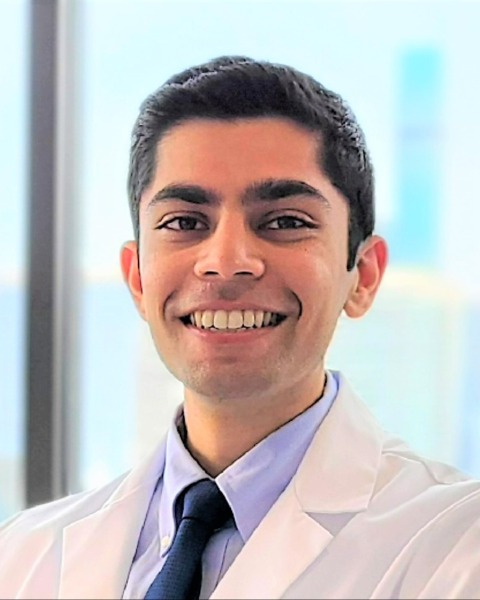Young Neurosurgeon Research Forum
Young Neurosurgeon Research Forum
(YNRF) Strain-based Segmentation of Carpal Tunnel Tissue Domains on Compression Ultrasound via Deformation-derived Boundary Contours
Friday, April 21, 2023
1:55pm - 2:02pm PST
Location: Los Angeles Convention Center, 406AB

Sachin Govind (he/him/his)
Medical Student
Northwestern University Feinberg School of Medicine
Chicago, Illinois, United States
Presenting Author(s)
Disclosure(s):
Sachin Govind: No financial relationships to disclose
Introduction: Tissue segmentation is central to ultrasonography as a diagnostic tool for the carpal tunnel. Current-state models consider intensity variation to derive thresholds or contours that provide tissue boundaries (thresholding, clustering, active contour tracking, etc.). However, mechanical properties of the tissues such as strain and elasticity have yet to be studied with the goal of better automatic tissue differentiation.
Methods: Current-state segmentation models are extended to incorporate information from optically measured tissue strain, based upon the assumption that tissues that deform with similar mechanical properties belong to the same tissue. Modeling the ultrasound image as a viscous compressible fluid subject to a twice differentiable velocity field, a volumetric strain rate and locally integrated strain map are derived from local divergence. This compressibility map is then used to segment the ultrasound image into continuous tissue domains, isolating the carpal tunnel and the nerve. Efficacy of segmentation was assessed by comparing the automatic segmentation mask to gold standard segmentation models for a dataset comprised of ultrasound phantoms and human-labeled videos of human wrists with tissue compression.
Results: Strain-based segmentation performed similarly to static segmentation for decompressed tissues and outperformed them for compressed tissues in preliminary testing with labeled ultrasound images and phantoms. The segmentation map proved to be an accurate model of tissue domains in the compressed state as assessed by comparison to human-determined boundaries: Precision (0.951 ± 0.155), Recall (0.908 ± 0.187), Mean Average Precision (0.821 ± 0.213), and Dice Similarity Coefficient (0.846 ± 0.071) values were promising for automatic nerve segmentation.
Conclusion : Measures of tissue elasticity and strain provides useful information to segmentation algorithms that are not discernible from static images or intensity-based analysis alone. This work could provide novel information to clinicians in evaluating pathologies involving changes in tissue elastic properties and can augment the utility of ultrasound in imaging dynamic anatomical structures.
Methods: Current-state segmentation models are extended to incorporate information from optically measured tissue strain, based upon the assumption that tissues that deform with similar mechanical properties belong to the same tissue. Modeling the ultrasound image as a viscous compressible fluid subject to a twice differentiable velocity field, a volumetric strain rate and locally integrated strain map are derived from local divergence. This compressibility map is then used to segment the ultrasound image into continuous tissue domains, isolating the carpal tunnel and the nerve. Efficacy of segmentation was assessed by comparing the automatic segmentation mask to gold standard segmentation models for a dataset comprised of ultrasound phantoms and human-labeled videos of human wrists with tissue compression.
Results: Strain-based segmentation performed similarly to static segmentation for decompressed tissues and outperformed them for compressed tissues in preliminary testing with labeled ultrasound images and phantoms. The segmentation map proved to be an accurate model of tissue domains in the compressed state as assessed by comparison to human-determined boundaries: Precision (0.951 ± 0.155), Recall (0.908 ± 0.187), Mean Average Precision (0.821 ± 0.213), and Dice Similarity Coefficient (0.846 ± 0.071) values were promising for automatic nerve segmentation.
Conclusion : Measures of tissue elasticity and strain provides useful information to segmentation algorithms that are not discernible from static images or intensity-based analysis alone. This work could provide novel information to clinicians in evaluating pathologies involving changes in tissue elastic properties and can augment the utility of ultrasound in imaging dynamic anatomical structures.
